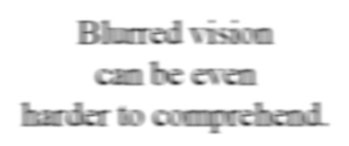Convergency Insufficiency
What is Convergence Insufficiency (CI)?
Convergence Insuffiency Study by the National Eye Institute Your eyes are designed to work together as a team to produce a single image. To do this, they both must aim and focus on the same point. This process is known as eye teaming.
When you look at an object up close, your eyes must turn in (converge) in order to maintain proper eye teaming. Convergence Insufficiency (CI) is the inability of the eyes to converge comfortably and sustain convergence while focusing on an object close to you such as a book or computer.
Easily Misdiagnosed as an Attention Disorder (ADHD)
A person with convergence insuffiency will find it difficult and uncomfortable to concentrate on reading and other activities up close for extended periods of time. This is easily misunderstood to be an attention disorder as the person themselves are often unaware that there is something unusual about their vision.
Symptoms of Convergence Insufficiency
Possible symptoms include
- Reading Slowly
- Loss of Place
- Loss of Concentration
- Eye Strain
- Headaches
- Blurry Vision
- Double Vision
A person with convergence insufficiency may find it difficult to work up close (i.e., reading, writing, schoolwork, etc.) comfortably for extended periods of time and quite often they will avoid such activities.


How is it Treated?
The treatment for convergence insufficiency is vision therapy. Specifically prescribed eye therapy can teach you to utilize your eyes comfortably and efficiently. After you receive this therapy, glasses may be needed. You will ultimately be able to read and perform near point activities comfortably without fatigue.






